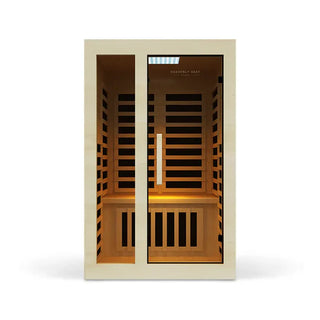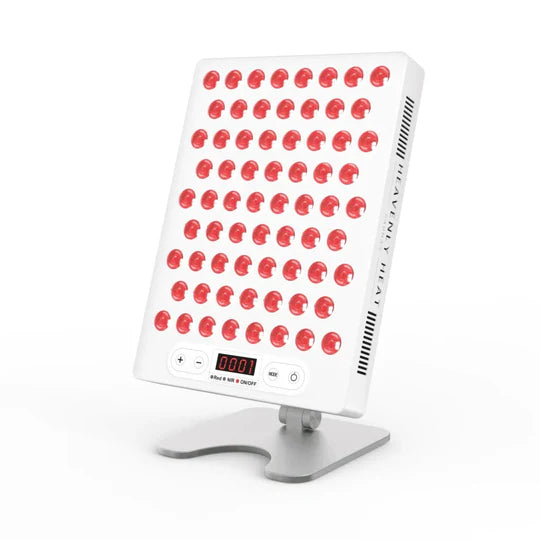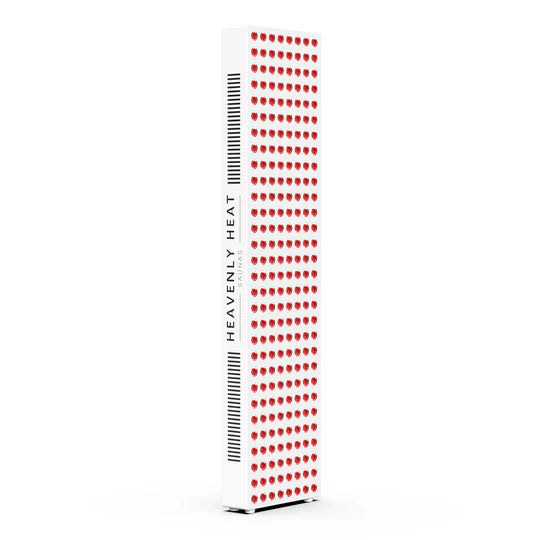6 Easy Ways to Reduce Bromine Levels in Hot Tub

Enjoying your hot tub feels amazing, but high bromine levels can ruin the experience. Too much bromine can irritate your skin, eyes, and even cause breathing issues.
The good news? You can control it easily. In this guide, we’ll share six simple ways to lower bromine levels, keep your water safe, and enjoy every soak worry-free.
Key Takeaways
Test Regularly: Check bromine levels 2–3 times a week to ensure safe and balanced water.
Control Spikes Quickly: Use a bromine neutralizer or partially drain to lower high bromine safely.
Maintain pH Balance: Keep water pH between 7.2–7.8 for effective bromine sanitation.
Clean Filters and Surfaces: Regular maintenance prevents buildup and keeps bromine working efficiently.
Stay Safe: Proper bromine levels protect your skin, eyes, and respiratory system while keeping your hot tub enjoyable.

What Is Bromine and How Is It Used in Hot Tubs?
Bromine is a chemical sanitizer commonly used in hot tubs to keep water clean and free of harmful microorganisms.
It works by breaking down and neutralizing bacteria and other contaminants, remaining effective even in the warm temperatures of spas.
Originally developed as an alternative to chlorine, bromine is valued for its stability, lower odor, and ability to provide consistent disinfection, making it a popular choice for those with sensitive skin.
6 Easy Ways to Reduce Bromine Levels in Hot Tub
Check Bromine Levels Often to Know When to Act
Test your hot tub water two to three times a week. Keep bromine between 3–5 ppm. High levels can cause odor, skin irritation, and damage spa parts.
Low levels allow bacteria to grow. Never use the spa without sanitizer, as untreated water can spread harmful germs.
Shock the Water to Break Down Excess Bromine
Bromine levels can rise without adding sanitizer. Shocking reduces bromine by breaking down waste and excess sanitizer.
Use chlorine or non-chlorine shock (non-chlorine is often preferred). Follow package directions to avoid overdosing.
Wait 20 minutes to several hours after shocking before using the spa, depending on product and dosage.
Partially Drain and Refill to Dilute Bromine
If shocking doesn’t fix high bromine, drain some spa water and replace it with fresh water to dilute sanitizer levels.
For slightly high bromine, remove about a quarter of the tub; for very high levels, drain more.
After refilling, test and adjust pH and alkalinity, then retest bromine with strips or a digital tester to confirm safe levels.
Add a Bromine Neutralizer to Quickly Lower Levels
If your hot tub’s bromine levels get too high, a bromine neutralizer can be a lifesaver. These products, usually containing sodium thiosulfate, work almost instantly often bringing levels down to a safe range within 30 minutes, compared to natural dissipation, which can take hours or even days.
They react quickly with excess bromine, neutralizing it so you can enjoy your soak without the harsh chemical smell or skin irritation.
Dosage depends on your tub size and the current bromine concentration, so always follow the manufacturer’s instructions carefully and re-test after adding small amounts.
While alternatives like letting the water evaporate, stopping extra dosing, or partially refilling the tub are safer and cheaper, they’re slower and less precise.
Using a neutralizer occasionally is safe and effective, but overuse can upset water balance, so it’s best for emergencies or sudden spikes.
Testing before and after treatment ensures the water is properly sanitized and ready for relaxing, worry-free hot tub sessions.
Keep pH Balanced for Efficient Bromine Control
Keeping your hot tub water pH balanced is essential for effective bromine sanitation. The ideal pH range is between 7.2 and 7.8, which ensures comfortable soaks, protects your hot tub’s equipment, and maximizes sanitizer efficiency.
When pH drops below 7.2, water becomes acidic, causing eye and skin irritation, corrosion, and reduced bromine effectiveness.
Conversely, pH above 7.8 makes the water too basic, leading to cloudy water, scaling, and poor bromine performance. In fact, at pH levels above 8.2, bromine is only 15% effective.
This happens because pH directly affects the amount of active hypobromous acid (%HOBr) in the water, the key factor in bromine’s ability to kill bacteria and viruses.
Unbalanced pH forces you to use more bromine to maintain safe water, which is inefficient and can stress your hot tub equipment.
Regularly testing water, adjusting alkalinity first, and using a pH increaser or decreaser keeps your spa water balanced, ensuring bromine works effectively without overuse.
Clean Filters and Surfaces to Prevent Bromine Buildup
Filters help keep bromine stable. Rinse them weekly and deep clean monthly with filter cleaner.
Dirty filters trap organics that reduce bromine effectiveness. Wipe down hot tub walls to prevent biofilm, which hides in jets and plumbing and consumes sanitizer. If water turns cloudy or foamy, drain the spa, scrub, and refill.
Why It’s Important to Maintain Proper Bromine Levels in the Hot tub?
Maintaining proper bromine levels in your hot tub is essential for both comfort and safety. The Centers for Disease Control and Prevention recommend keeping bromine levels between 4–8 ppm, pH between 7.0–7.8, and chlorine at least 3 ppm, with readings above these ranges requiring attention.
Without proper bromine, bacteria like Pseudomonas aeruginosa can start multiplying within 24 hours, reaching dangerous levels in just 2–3 days.
Low bromine also allows harmful microorganisms such as Legionella to thrive, increasing the risk of Legionnaires’ disease, hot tub rash, and even urinary tract infections.
Bromine has an advantage over chlorine in hot tubs because it is more stable in warm water and produces a milder scent, making it ideal for indoor settings.
To stay safe, regularly test water quality, maintain disinfectant levels, clean filtration systems, and rinse before and after use.
By following these practices, you not only protect your health but also ensure a more relaxing and worry-free hot tub experience.
What Is the Safe Bromine Level in a Hot Tub?
Maintaining the right bromine level in your hot tub is essential for a safe and enjoyable soak.
Health authorities generally recommend keeping bromine between 4–8 ppm, and if it exceeds 8 ppm, it’s wise to consult the tub’s operator or owner.
Testing your water 2–3 times a week is important, especially if the hot tub sees frequent use, to ensure the balance stays consistent.
The CDC advises a bromine range of 3–5 ppm, along with a pH of 7.2–7.8, depending on the size of your tub and how often it’s used.
Going outside the recommended levels can pose risks: research from ScienceDirect notes that high bromide exposure may cause respiratory irritation, dizziness, headache, or gastrointestinal issues if ingested in large amounts.
On the other hand, low bromine can allow bacteria to grow, making your hot tub unsafe.
Regular testing and careful adjustment help keep your spa clean, safe, and relaxing every time you step in.
How to Tell if Bromine Levels Are Too High?
Maintaining safe bromine levels in pools or spas is essential for health. Guidelines suggest 3–8 ppm for bromine, compared to 1–4 ppm for chlorine, and it’s always best to follow your product’s instructions.
When bromine levels become dangerously high, it can cause bromism, affecting the nervous system, skin, and digestive system.
Chronic exposure may lead to fatigue, confusion, tremors, blurred vision, acne-like rashes, facial swelling, nausea, or a metallic taste in the mouth.
Acute exposure, such as inhaling vapor, swallowing bromine compounds, or direct skin contact, can trigger severe respiratory distress, burns, vomiting, and even life-threatening conditions.
Health effects from high bromine include skin, eye, and lung irritation, as well as neurological symptoms.
To ensure safety, chemical test kits like the Spectroquant® Bromine Reagent Test can accurately measure bromine levels in water.
Regular monitoring, proper handling, and prompt action at the first signs of overexposure can help prevent serious health risks.
FAQs
How long does it take for bromine levels to drop naturally?
Bromine levels naturally drop within hours to days by stopping bromine additions, removing the hot tub cover, and running circulation to promote evaporation. Higher levels dissipate faster through partial water replacement, while chemical neutralizers act quickest but risk leaving the water unsanitized if overused.
Can you lower bromine levels without draining the hot tub?
Yes, you can lower bromine levels in a hot tub without fully draining it by stopping bromine addition, removing the cover, letting it evaporate, using a chemical neutralizer like sodium thiosulfate carefully, or partially diluting with fresh water, while frequently testing to maintain 1–5 ppm levels.
What happens if you get in a hot tub with high bromine?
Hot tubs rely on bromine to keep water clean, and the CDC recommends maintaining levels between 3–5 ppm depending on usage. However, too much bromine can quickly turn a relaxing soak into an uncomfortable experience. The National Library of Medicine notes that high bromine concentrations can irritate the skin, eyes, and respiratory tract, and inhaling its fumes may even lead to pulmonary issues. Many people report itchy eyes, rashes, and breathing difficulties when bromine is overused, making regular testing essential for safe enjoyment. Beyond immediate discomfort, excessive bromine reacts with other chemicals in the water to form brominated disinfection by-products. Research from the Journal of Hazardous Materials highlights that these by-products can be toxic, potentially increasing long-term health risks, including cancer. Balancing bromine properly not only protects your health but also keeps your spa water clean, safe, and truly relaxing, so you can enjoy the hot tub without worry.
How do you keep bromine at a steady safe level long-term?
To maintain a steady, safe bromine level long-term, establish a bromide bank using 10–15 ppm sodium bromide after each refill, shock weekly to activate it, and use a floating tablet dispenser for continuous dosing. Regularly test water, balance pH and alkalinity, clean filters, and adjust for usage.







































